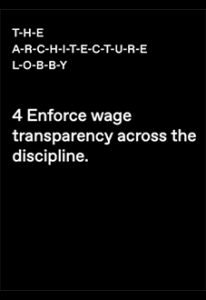
Among the delights of the biennial Monterey Design Conference, produced by AIA California at Asilomar in Pacific Grove, California, is a presentation by a “tribal elder.” Jack MacAllister, FAIA, spoke at MDC in 2013. At the age of 25, Jack had led the design and construction of the Salk Institute in La Jolla for the Office of Louis Kahn. He went on to co-found Anshen + Allen Los Angeles (now CO Architects) and to lead both its parent firm, Anshen + Allen, and NBBJ in times of dramatic growth. An early pioneer of digital technology, he reveled in not having drawn a construction document with a pencil since 1971. In “60 Years – 10 Lessons,” captured by Deborah Blackburn, Jack shares insights from his wide-ranging experience. A related studio interview can be found as part of the “Insights” series—”Wisdom from Distinguished Colleagues”—at aecKnowledge, an educational resource for the design and construction industry.
The USModernist Library is the largest open digital collection of major US 20th-century architecture magazines, with approximately 2.6 million downloadable pages – all free to access. It is one of three components of USModernist, a nonprofit educational archive for the documentation, preservation, and promotion of residential Modernist architecture. Its other two components are USModernist Masters Gallery, a guide to the work of over 70 major architects, and USModernist Radio, “the ‘Car Talk’ of architectural podcasts.” Browsing, we stumbled on:

Searching for the phrase “staying in business,” we found:

Individuals, firms, and libraries are encouraged to contribute magazines to the the USModernist Library, which will pay for shipping. Here’s what’s missing: www.usmodernist.org/needed.htm.

The Architecture Lobby is an organization of architectural workers advocating for the value of architecture in the general public and for architectural work within the discipline. “Work,” by architect and educator Peggy Deamer, one of The Architecture Lobby’s founders, encapsulates the issues that it addresses. The full version of “Work” can be found in Perspecta 47: Money and in Deamer’s Architect as Worker: Immaterial Labor, the Creative Class, and the Politics of Design (Bloomsbury, 2015). For more on The Architecture Lobby and other organizations dedicated to just practices within the profession, see this issue’s Justice section. A related issue is the role of international workers, as chronicled in . . .

ARCADE is the journal of the Seattle-based nonprofit of the same name, which creates opportunities for sharing ideas about design, culture, and the built environment. “The Thorny Road to Work in the United States: An International Design Student’s Struggle to Obtain an H-1B Visa” is the personal story of a young designer from Guangdong Province, China, who studied at the University of Washington.

Like many architects, Jody Brown of Durham, North Carolina, was laid off in 2009, and, like some, he started a blog. His posts range from quiet reflections on things like automobile tunnels to designs for architects’ valentines with such sentiments as “Love means never having to say you’re Saarinen” and “You had me at Dichotomy.” Some of the posts are vulnerably poignant, many are funny, and many, like “Architectural Statistics,” touch on the vagaries of architectural employment.
From arcCA DIGEST Season 2, “Staying In Business.”





